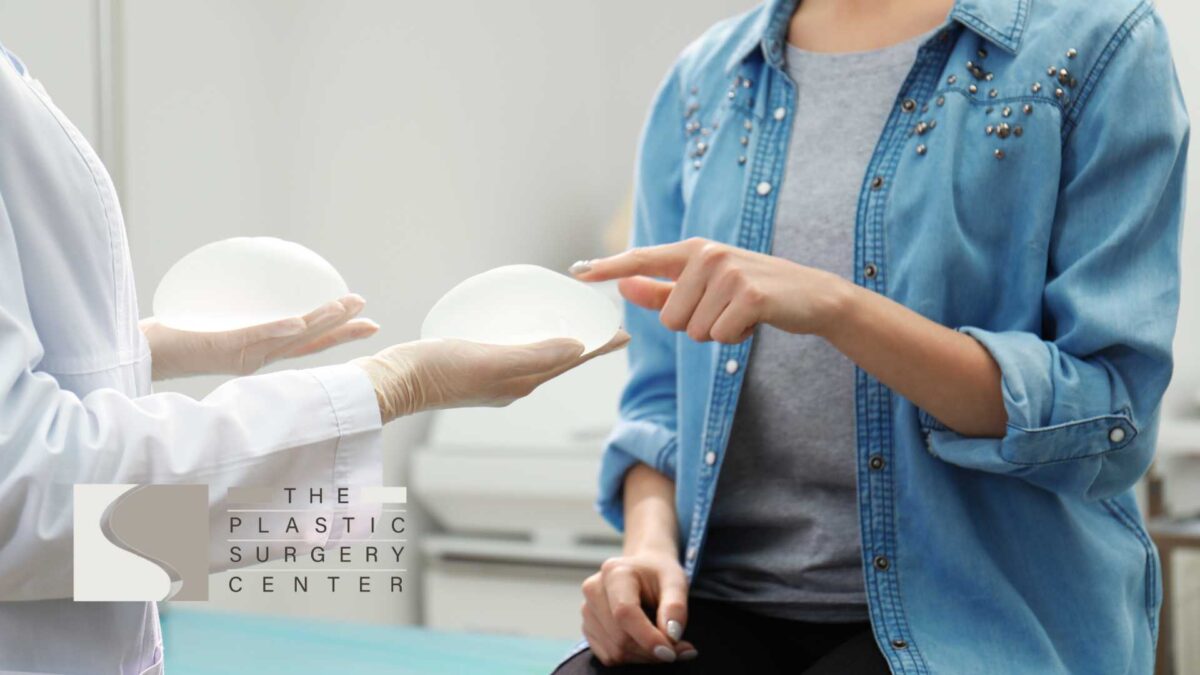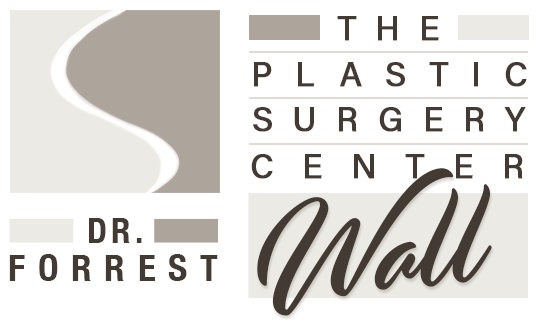Breast augmentations are some of the most common procedures that plastic surgeons in the United States perform. Breast augmentations can enhance your appearance and give you a confidence boost. When women are in the consultation process of their breast augmentation, oftentimes, we get questions on implant size. What size implants are best? How do we decide on implant sizes? How do I get to this cup size or this cup size? And more specifically, questions surrounding breast implants A to C cup transformations.
In this post, Dr. Forrest Wall will answer questions about C cup breast augmentation. We’ll talk about how we size implants and all the factors that go into choosing implants for women.

Can I Get a C Cup Breast Augmentation?
The short answer: probably.
When you’re considering a breast augmentation procedure in Shreveport, you can technically have whatever size implant you desire. However, some implant sizes may not be the smart choice for some women. We’ll talk further down on the negative impacts of choosing the wrong size implant.
This is where your surgeon’s recommendation comes in. With some information about your lifestyle and your expectations of the procedure, Dr. Wall can help you decide on an implant size that works for you and your lifestyle and also achieves the look that you want.
Achieving a C-cup breast augmentation, even when moving up from an A-cup, usually only requires a moderately sized implant. The majority of the time, women with natural A cups have no difficulty with a C Cup breast augmentation.
How Do You Size Implants?
The language of breast augmentation implants can be confusing for some women.
First of all, we don’t measure implants by bra cup sizes.
There are several reasons for this, but the main reason is that bra sizes are far from standard. Any woman who’s gone bra shopping knows that a C cup in one bra may be a CC or a D or even a B in another brand.
Doctors use cubic centimeters or cc when talking about breast augmentation. Therefore, achieving a C cup breast augmentation depends on a few different factors, including:
- The current dimensions of your chest
- How much natural breast tissue you have
- Your expectations and desires
Obviously, it takes a smaller implant to go from a B cup to a C cup than for breast implants A cup to C cup. But achieving a C cup breast augmentation from a natural A cup is still very doable.
What are Cubic Centimeters?
Cubic centimeters, or cc’s, indicate the amount of fluid inside the implant. Implant sizes range from 100 cc’s up to 800 cc’s, increasing in increments of 25 cc’s. For some, that can be hard to visualize. Use the following examples to help:
- 1 teaspoon=5 cc
- 1 tablespoon=15 cc
- 1 soda can=355 cc
Increasing your implant size from 175 to 200 cc’s may seem like a big jump at first. But when you visualize it as being only 5 teaspoons more fluid in the implant, the difference is not so drastic.
Again, breast implants A to C will be moderately-sized implants. For smaller sized implants, you may opt for an A cup to a B cup.

Breast Implants A to C Cup: Is it Worth Getting a C Cup Breast Augmentation?
If you’re a natural A cup and are planning breast augmentation, you may wonder if it’s even worth it to aim for a C cup breast augmentation.
There are many reasons a woman with a natural A cup breast may aim for a C cup in a breast augmentation. Some of these reasons are:
- Clothing. Standard clothing designs are best for women with a B or C cup breast. If you have a natural A cup and increase to a D cup or beyond, you’ll probably have to buy all new clothing to accommodate your new look.
- Lifestyle. If you lead a particularly athletic lifestyle and want a breast augmentation, a C cup may be just right for you.
- Symmetry. Breast augmentations aren’t just about size. Oftentimes, women may get a breast augmentation to even out their breasts, or improve the shape. A skilled surgeon can do this and succeed where no padded bra ever could.
Why Shouldn’t I Get Bigger Implants?
Well, you can, if you want them. The primary factor in determining implant size is what you want out of the procedure. If you want the biggest implant size possible, Dr. Wall and his team will work with you and find an implant size and style that you love.
However, increasing from an A cup to a D cup or beyond will require some sizable implants. There are many reasons this may not be the best choice for everyone, some of which we talked about above: lifestyle, clothing, etc.
But there are more medical reasons it may not necessarily be prudent to have very large implants.
First of all, implant manufacturers design breast implants to be lightweight, similar to the weight of actual breast tissue. But the larger your implant, the heavier it will be. Increasing from an A cup to a D cup or beyond will significantly increase the weight of your breasts, which could affect your posture and may cause you back or shoulder pain over time.
Second, larger implants mean there is more risk for issues like rippling, or the implants slipping in the breast pocket. Larger implants also mean more risk for sagging or dropping over time, since larger implants will be much heavier.
Third, getting larger implants means your breast augmentation will be more noticeable. This is a desirable outcome for many women, but not for all women. Some women may want something more subtle.

Will Insurance Pay For My Cosmetic Surgery?
For those wondering if insurance will pay for cosmetic surgery, the answer is probably not.
Insurance companies consider most cosmetic procedures, including breast augmentations, to be voluntary. They are not medically necessary.
However, the only way to know for sure is to speak to your insurance company. There are times when certain conditions make procedures like breast augmentations medically necessary.
Shreveport Breast Augmentation Plastic Surgeon
Dr. Forrest Wall is a board-certified plastic surgeon serving the north Louisiana area. If you or someone you know has questions about a breast augmentation, contact Plastic Surgery Center by calling 318-221-1629. You can also leave us a message on our website.
Low Pressure Fitness: Exercise Guide – Bike fitness to go! – 1211 s. alamo san antonio, tx – health and fitness, exercise and fitness programs – (210)-960-6863
